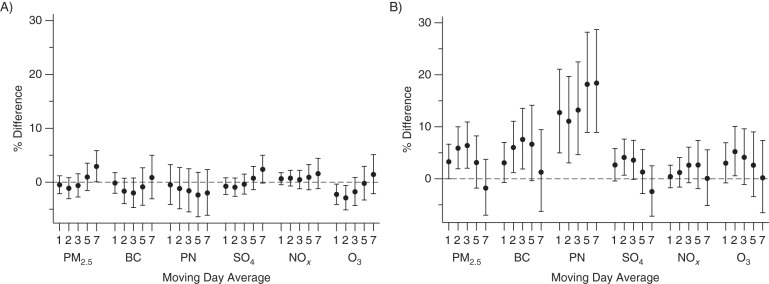Figure 1.

Associations of moving day averages in air pollutants with measurements of microvascular function (n = 2,369) in the Framingham Heart Study Offspring and Third Generation Cohorts, Greater Boston Area, Massachusetts, 2003–2008. A) Peripheral arterial tonometry ratio. B) Baseline pulse amplitude. Results expressed as percent difference in measurement per increment in air pollution. Unit changes in air pollutants are as follows: particulate matter with aerodynamic diameter ≤2.5 µm (PM2.5), 5 µg/m3; black carbon (BC), 0.4 µg/m3; particle number (PN), 15,000/cm3; sulfate (SO4), 2 µg/m3; nitrogen oxides (NOx), 0.01 ppm; and ozone (O3), 0.01 ppm. Models are adjusted for age, age2, sex, cohort, presence of diabetes, body mass index (weight (kg)/height (m)2), triglyceride level, ratio of total cholesterol to high-density lipoprotein, mean systolic blood pressure, median household income of US census tract in 2000, educational level, smoking status, day of week, season (sine and cosine of day of year), time trend, temperature, relative humidity, temperature × relative humidity, and use of statin or antihypertensive medication. Bars, 95% confidence intervals.
